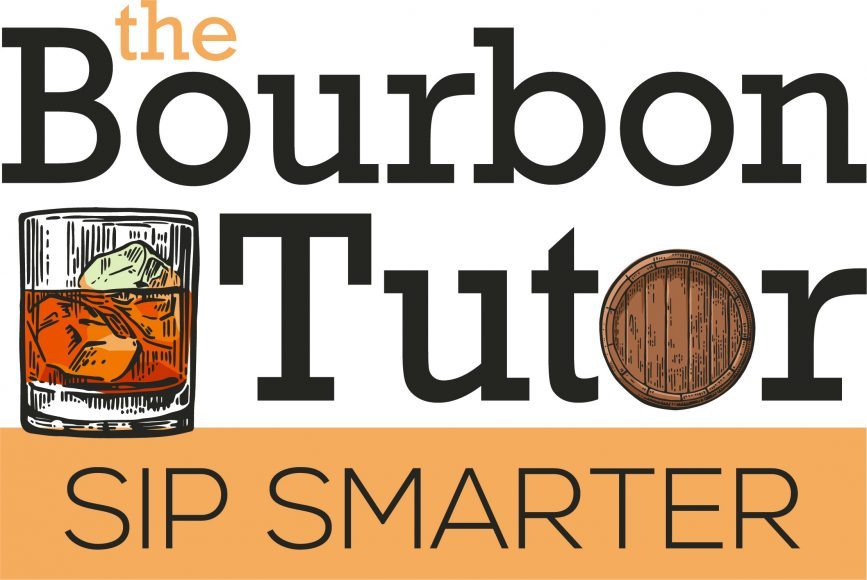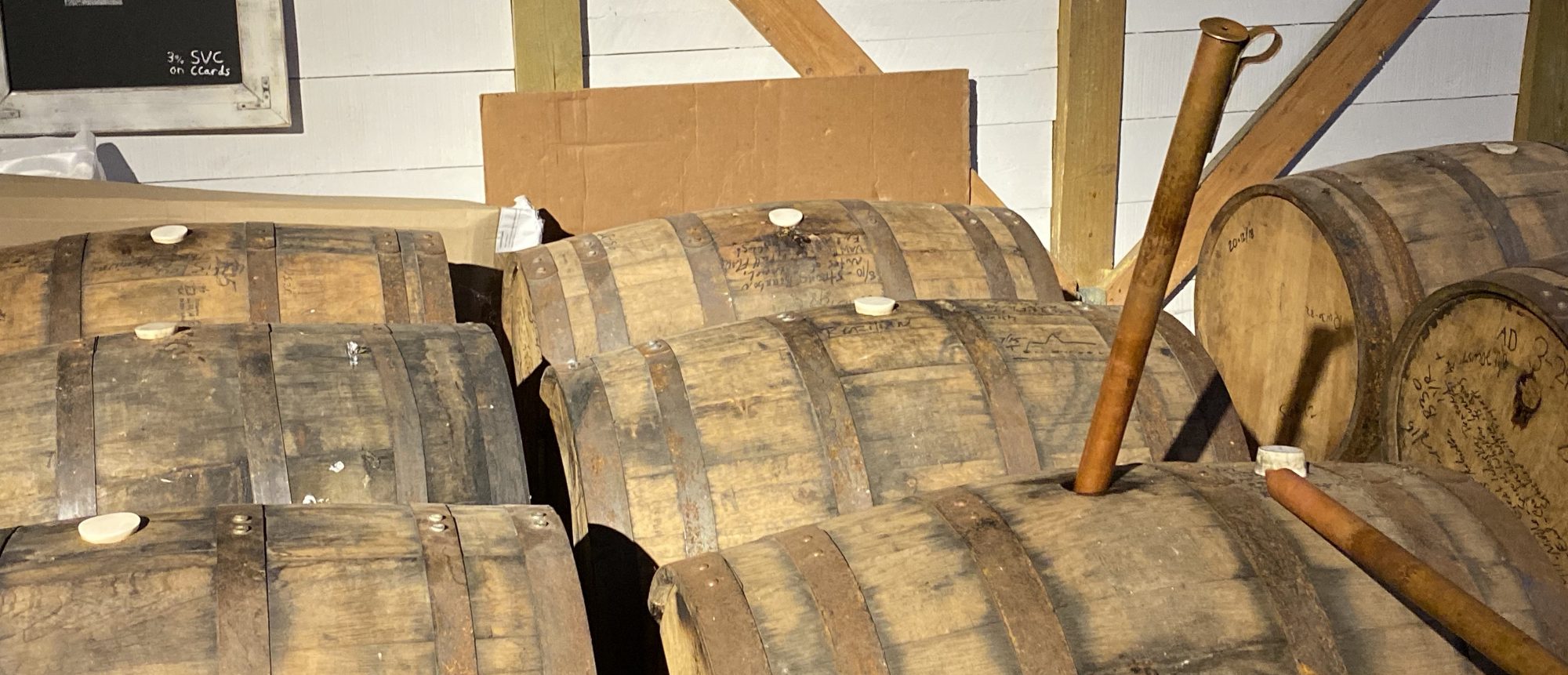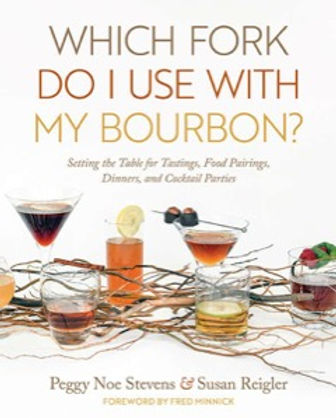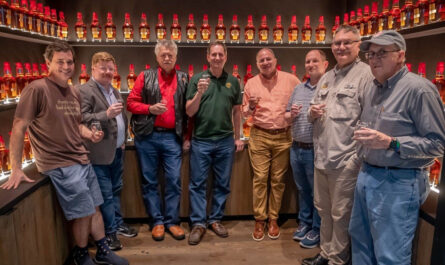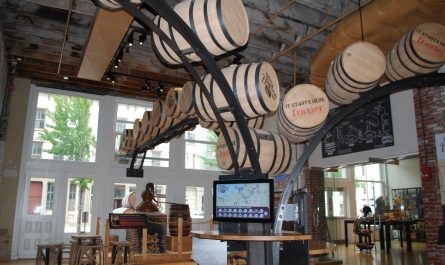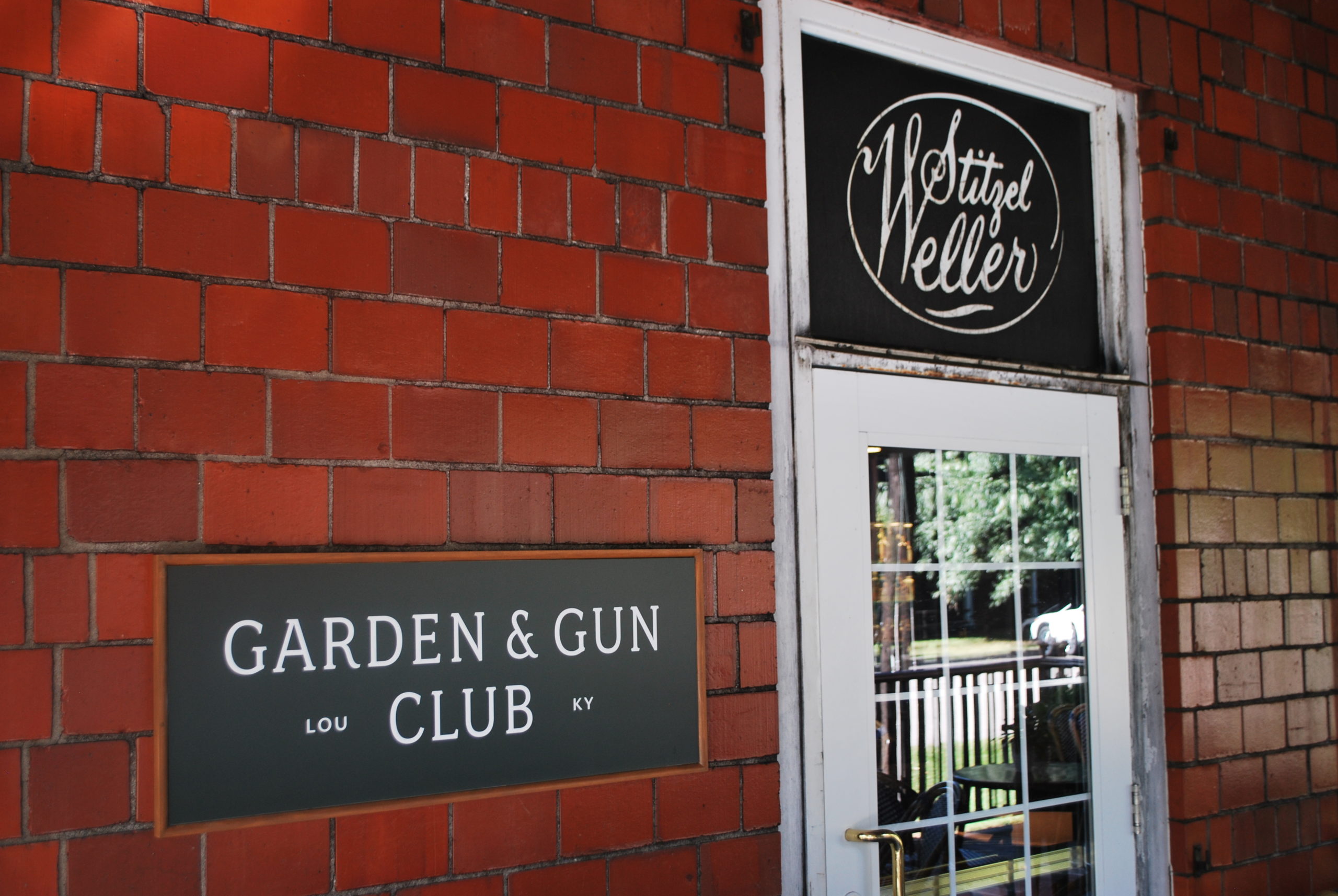If you’re a bourbon enthusiast, you’ve probably got a few whiskey-related books on your shelf. There’s a helpful new book out to consider adding to your collection, but plan to keep it near the end of the shelf so you can take it down again and again.
“Which Fork Do I Use With My Bourbon?” offers how-to tips on everything you need to know to entertain at home using bourbon as the centerpiece: from how to set up the perfect bourbon bar, to how to do a bourbon tasting, to pairing food and cooking with bourbon.
Master bourbon taster and Kentucky Bourbon Hall of Fame member Peggy Noe Stevens teamed up with bourbon writer and former restaurant critic Susan Reigler to create this practical book.
I talked to the authors recently and asked if there was a simple answer to the question posed in their title.
“Yes! The answer is any fork,” said Stevens. “That was kind of our play on words to say that bourbon doesn’t really have an etiquette, it’s about tradition. So because bourbon has been so approachable and friendly, we’re not going to poo-poo anybody on an idea they have in pairing or tasting. Everybody has their own palette and everybody tastes differently. We want you to enjoy bourbon and we want you to enjoy hospitality in your own style.”
In the book’s foreword, best-selling author, bourbon curator, and taster Fred Minnick sets the table for why a book like this is valuable to anyone who drinks bourbon and also entertains:
“Many of us (whiskey drinkers) don’t know how to entertain. Oh, sure, we can drink and shoot the breeze, but our hodgepodge of glasses and limited snacks (Kraft American cheese slices and apples, in my case) consistently prove that our only focus is the bourbon. Well, thank goodness my good friends Peggy Noe Stevens and Susan Reigler decided to write Which Fork Do I Use with My Bourbon? To take the guesswork out of entertaining for us less sophisticated types.”
Here are some portions of our conversation:
The Bourbon Tutor: The first thing that caught my eye, and I thought it was great, was the book’s dedication: “To the Kentucky bourbon industry, which made it possible for us to have careers drinking bourbon. Cheers!” How does it feel to have such dream jobs?
Reigler: “It’s a very good feeling. It’s even better when the samples from the distilleries show up at my doorstep. Keeping UPS and FedEx busy.”
Stevens: “In looking at my career over the last 30 years being in the industry and I look at other people like my friends and family who have had other careers in different industries…I’ve got to tell you we’ve had a lot of fun. We have a very rewarding and fun job making people happy, teaching them about whiskey.”

TBT: I’m very jealous. What was the genesis of this book? What made the two of you get together and decide to write it and how would you describe it?
Stevens: “It started about 11 years ago…I wanted to do a book that encompassed all of my hospitality background, knowledge of events, and things of that nature. But I kept putting it off because it was never the right time to write it. And then Susan and I, through the Bourbon Women Association and doing whiskey reviews for American Whiskey Magazine, just became really good friends and comrades. We just have a real mutual respect for each other. More and more, people kept coming up and saying, ‘How do I do this in my home?’ So I dusted off the idea and said, ‘Susan, would you like to partner on this and we pool our knowledge.”
Reigler: “Keeping on a schedule like that, since we’re both really busy, was no mean feat. So I think having the two of us working together and pushing each other was really good.”
TBT: Obviously you had a lot of fun with it; it shows all the way through. Anyone who might have the mistaken idea that this book is only for women, you blew that up when you had Fred Minnick write the foreword to the book. Who do you think can benefit from reading this book?
Stevens: “I think we cast a wide net. It’s for everyone, not just male or female. Men love to do tastings, women love to do tastings. Both men and women love to entertain in their homes. The most important thing is that (the book) goes from basic knowledge and understanding of the how-to’s, all the way to very advanced. People who have leapfrogged over the basics and want to learn even a deeper appreciation for how to conduct a food pairing, for example, or a deeper dive into tasting.
Riegler: “I think what will be valuable to anybody who really enjoys bourbon and wants to be able to discuss it better with their friends is having the vocabulary list that we put together of flavors and tastes and aromas. Oftentimes I think, ‘Wow, I really enjoyed that bourbon, but how do I describe it?’ On page 92 where we have our Flavor Intensity Scale, there are some many descriptors there. Anybody who is seriously interested in whiskey will really appreciate having some more words at their beck and call.”

TBT: Peggy, I saw your presentation on the Whiskey From Home broadcast. You made the point that you don’t really need to be either an expert chef or a hardcore bourbon connoisseur to appreciate the idea of matching good food to good bourbon. That seems to be at the heart of a lot of this.
Stevens: “It is. That speaks to the approachability of the book. Because everybody thinks, ‘Oh gosh, if I do a tasting I have to say such articulate food terminology or whiskey terminology.’ And really you don’t. It’s based on your personal food memory. Because bourbon has food flavors as descriptors and we all know how to eat, right? You don’t have to be an expert to appreciate and describe bourbon.”
TBT: There’s a chapter on Setting Up the Perfect Bourbon Bar. Tell me more.
Stevens: “Before you put the first bottle on the bar, (the thing) is the location. It’s all about looking at your house like real estate and saying, ‘What is beach front property?’ That is where your bar should go. Spreading out the flow of where your guests are going to go, and putting the bar in a location that doesn’t have a traffic jam.
“Then you start thinking about all the accouterments: what am I going to serve? Is it going to be a signature cocktail, a batch of punch, or a selection everyone pours over the rocks? So it’s really equipping and arming the host with preparation – the key to any great party or event. Thinking through the small little details…so the more you can prep and use the tools that we outline in the book, I think you’ll see a real difference in your blood pressure level.”
WN: What about the idea of just saying, ‘I want to do a bourbon tasting?’”
Reigler: “The chapter where we have bourbon tasting basics, we break down the types of bourbons, the categories of bourbons, into traditional, wheated, and high rye. This is a good jumping off point.”
Stevens: “Everybody is going to have their own tastes. Just because you really like a bourbon and somebody else doesn’t like a bourbon doesn’t mean you’re wrong. Your taste is your taste.”
WN: What do we need to know about food pairings and bourbon?
Stevens: “I think the most important thing is to dissect the flavors of the bourbon. Look at fruit, wheat, spice, etc. If you get huge chocolate notes (from the bourbon) right then you have a decision: Do I want to pair it with a food that will enhance this chocolate? Do I want to pair it with a food that will balance this chocolate and not over do? So it’s really about dissecting the food flavors in the whiskey first and then deciding what do I want to do with it: dial up or dial down the flavor by adding that particular flavor of food.
“I learned a very important word from a former master distillery in doing food pairings and that is to create “harmony” with the food.”
Reigler: “I think people have some stereotypes about what goes with bourbon, basically your traditional Southern flavors like ham or chocolate. But I recommend going through some of these other pairing that work extremely well. One of Peggy’s favorites is wasabi peas. You would never think (of it) but, boy, is it great.”
TBT: The photography in the book is quite well done. Was the visual aspect of the book important to you?
Reigler: “The writing has to be engaging, but also the visual aspect of the book has to capture people’s imaginations. ‘Oh, I wonder what’s on the next page.’”
Stevens: “I knew that this book had to be highly visual because it’s a how-to book. It’s a guide. It’s one thing to write out what to do and how to do it, but it’s another thing to actually show you. It’s a show and tell book. I love when there is a photo alongside the recipe so you can actually see what it’s supposed to look like. “

TBT: The book is full of great recipes and party tricks. Do you have a personal favorite?
Stevens: “Mine would be some of the recipes that were handed down to me, like Granny Hunter’s Beef Tenderloin. That was given to me by my mother-in-law. I have served it at every Derby Party that I’ve had for the last 25 years.”
Reigler: “I’ve been fixing this pork tenderloin that’s marinated with beer for a really long time. It’s always a hit and is especially good if you put it on a grill. I came up with (Susan’s) Chicken and Country Ham Crepes with Bourbon Cream Sauce many years ago and it’s also been a real party-pleaser when I’ve trotted it out for company.”
TBT: Any closing thoughts?
Reigler: “I just want to put in a promotion here for how the distilleries have really stepped up their food service and entertaining in the last few years. To make the distilleries destinations, not just to see how the whiskey is made, but to come and enjoy their product in a beautiful setting with wonderful food. They’re almost in competition to see who can have the best restaurant and that’s a fabulous thing, good for all of us.”
Stevens: “I would love for people to consider this book as a “go-to” for their party planning and entertaining, for their tastings. There are so many history books written on whiskey, but it’s not like you pull it off the shelf every month. I hope everyone puts their fingerprints on it, spills olive oil on it, that it’s used on very regular basis.”
The 224-page hardcover book has full-color photos throughout and is priced at $29.95. It’s available through Amazon and Barnes and Noble. Signed copies are available at Carmichaels Bookstore in Louisville.
From the authors’ bios:
Peggy Noe Stevens is president of Peggy Noe Stevens & Associates and founder of the Bourbon Women Association. The first female master bourbon taster, she is also a professional speaker. A 2019 Kentucky Bourbon Hall of Fame inductee, Peggy has planned hundreds of events globally over the last thirty years, often working with distilleries and master distillers and is credited with co-creating the famed Kentucky Bourbon Trail.
Susan Reigler is a former restaurant critic for the Louisville Courier-Journal and a current correspondent for Bourbon+ and American Whiskey magazines. She has also authored or co-authored six additional books about bourbon, including Kentucky Bourbon Country: The Essential Travel Guide and The Kentucky Bourbon Cocktail Book.


